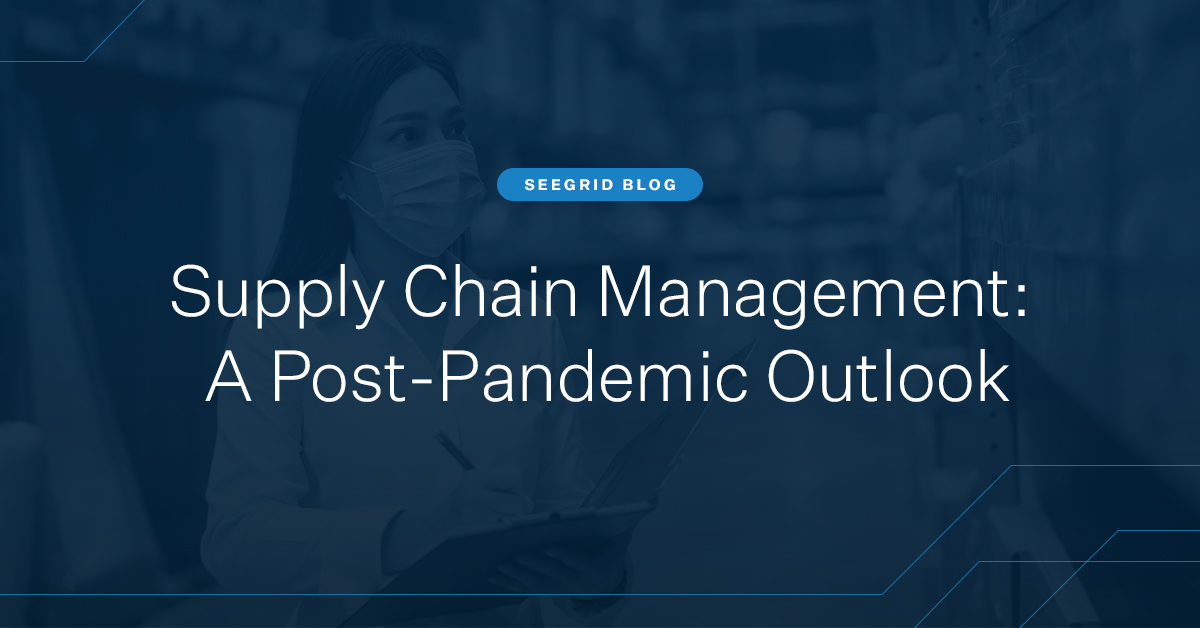COVID-19 flipped the world upside down and put a tremendous strain on the supply chain. Consumer behaviors and everyday interactions moved from in-person to online. While many office employees were able to conduct business as usual from their living rooms, manufacturing and material handling facilities that require workers on the facility floor had to adapt to new health and safety protocols quickly. Some manufacturing plants were shut down in response to new guidelines, while e-commerce companies experienced demand that surpassed their highest-ever peaks.
Supply chain managers can take away valuable lessons learned during the height of COVID-19 lockdowns about human labor, demand, urgency, and resiliency. The world isn’t out of the woods yet, leaving many wondering: What is the future of supply chain management?
Here are four hurdles supply chain professionals faced during COVID-19, and how there is one common link that can prepare companies for future disruptions of any kind: autonomous mobile robots (AMRs).
Employee Health and Safety
As demands and challenges began to evolve and escalate, the notion of health and safety took on an entirely new meaning. Social distancing measures needed to be implemented essentially overnight, requiring facilities to completely restructure workflows to keep their workers safe by reducing in-person interactions and maintaining proper distance between employees.
Due to these social distancing mandates, 40% to 50% of manufacturing employees were unable to work on-site during the height of lockdowns. Social distancing requirements, workers calling in sick, plus the already existing labor shortage made it difficult to keep production running smoothly.
Companies can create safer, more predictable work environments by automating workflows and reducing touch points. In fact, at a leading e-commerce warehouse facility, Seegrid Palion AMRs allowed for a 50% reduction in operator touches over the course of one shift by automating payload exchanges. Additionally, it allowed for a 100% decrease in direct contact between employees working in different functional areas.
This doesn’t mean that the people who used to drive forklifts and pallet trucks are jobless. Instead of working a physically demanding, dangerous job, they can take on new, more rewarding career opportunities in safer working environments. AMRs not only help reduce challenges caused by labor shortages, but they also create safer, healthier work environments that elevate human potential.
Fulfilling Demand
According to a McKinsey study, e-commerce grew at five times the rate it did before the pandemic. Also, the majority of polled respondents said they were likely to continue online shopping even when life returns to “normal.” The customer demand that soared during the height of lockdown is still going strong. Now, supply chain managers are dealing with a perpetual peak in demand that is showing no signs of slowing down.
Predictability is key in fulfilling demand. When managers understand how their AMR fleet is performing and how much output to expect at the end of every day, shift, or hour, they’ll have a better idea of where they need to scale and where they can make adjustments. Seegrid Fleet Geek, a fleet analytics software, provides visibility and on-demand actionable insights that help facilities boost capacity and optimize fleet performance. Data and analytics drive continuous improvement and provide managers with the metrics they need to ensure an agile fleet that can keep pace with skyrocketing demand.
Speed
In the spring of 2020, there was a massive rush for household goods. Shoppers flew from store to store and journeyed to the next town over in search of items like toilet paper, hand soap, and flour. Not only were manufacturers struggling to make products fast enough, but the supply chain had to keep up with a frantic pace with fewer workers.
AMRs excel at increasing throughput. Managers can supplement their AMR fleet at any time with additional mobile robots and integrate them into daily operations with minimal downtime. AMRs don’t require external infrastructure to do their jobs. Palion AMRs see and react to the dynamic environments around them by fusing a proprietary computer vision system with real-time sensor data. Collecting a high density of information, Palion AMRs have a greater ability to comprehend and make decisions across a greater number of situations. Also, programming an AMR is easy and does not require the oversight of a Seegrid engineer: drive the AMR through its route once and then you’re ready to send it on its way. If processes need to change, simply redeploy AMRs to different functions or shifts.
Most importantly, AMRs can complete tasks quickly without compromising safety. When humans are under intense time crunches, human error often increases. For example, a manual forklift driver may speed around corners or overload the vehicle and cause it to tip. AMRs always transport the correct amount of cargo, follow the rules, and travel at consistent, safe speeds. Palion AMRs have driven millions of miles without a single personnel accident.
Building Resiliency
The pandemic put a spotlight on the companies that had flexible automation solutions in place. Having an agile supply chain is crucial to keeping operations running during disruptions, challenges, and changes. The faster a company can successfully respond and react to changes, the stronger it will be today and in the long term, ensuring on-time delivery for a positive customer experience.
Another McKinsey survey of 800 executives confirmed that automation and artificial intelligence will be the way of the future. Thirty-five percent of respondents are digitizing their supply chain, and 67% of companies have accelerated their investments and adoption in automation and AI. This surge in adoption is a huge vote of confidence in the abilities of this technology.
What Is the Future of Supply Chain Management?
The supply chain of the future will be more flexible, responsive, and resilient thanks to robotics, automation, and analytics software. Supply chain leaders must formulate their business strategy to account for disruptions, growth, and unforeseeable circumstances.
Research predicts that industries that have high levels of physical proximity between workers, such as warehousing, manufacturing, and logistics, will likely see greater transformations once the world settles into a new normal. Embracing robotics and AI will not only prepare supply chain operations for the unknown but also for the future.
Infographic: AMRs Increase Supply Chain Flexibility & Predictability
Download this infographic to explore how automation protects employee health and manages supply chain unpredictability with resiliency and scalability.







